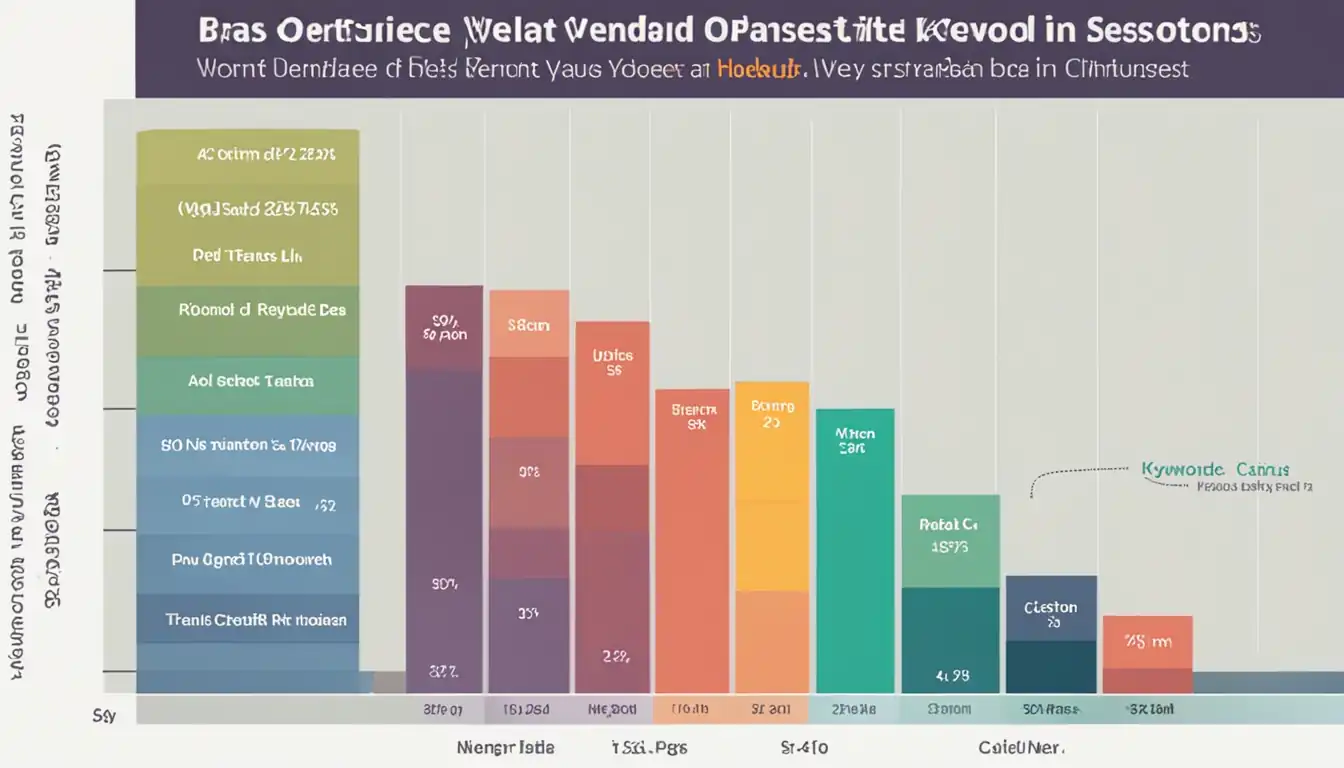Content Keyword Density Guidelines: Mastering SEO Writing

Welcome to the world of SEO writing, where mastering keyword density is key to boosting your content's visibility on search engines. Understanding how to effectively use keywords in your writing can make all the difference in driving traffic to your website. In this post, we will delve into the guidelines for content keyword density and provide you with the tools and techniques you need to optimize your SEO writing.
Understanding Keyword Density
What is Keyword Density
Keyword density refers to the percentage of times a particular keyword or phrase appears on a webpage compared to the total number of words on that page. It is an important metric in SEO writing as it helps search engines understand the relevance of a webpage to a particular search query.
Why It Matters in SEO
Keyword density plays a crucial role in determining the ranking of a webpage on search engine results pages (SERPs). By strategically placing relevant keywords throughout your content, you can signal to search engines what your page is about and increase the chances of it being displayed to users searching for that topic. However, it is essential to maintain a balance and avoid over-optimizing your content with excessive keyword stuffing, which can lead to penalties from search engines.
Best Practices for Keyword Usage

When it comes to optimizing your content for search engines, keyword usage is a crucial factor to consider. Finding the right balance between overusing and underusing keywords can be tricky, but following these best practices can help you master SEO writing.
Balancing Act Between Overuse and Underuse
Keyword density refers to the number of times a keyword or phrase appears in your content compared to the total word count. While it's important to include relevant keywords in your content for SEO purposes, overusing them can result in keyword stuffing, which can harm your rankings.
On the other hand, underusing keywords may not effectively communicate the topic of your content to search engines. Finding the sweet spot where keywords are used naturally and strategically is key to successful SEO writing.
Tools to Measure Keyword Density
There are several tools available that can help you measure keyword density in your content. These tools analyze your text and provide insights into how often certain keywords appear, allowing you to adjust as needed.
Some popular keyword density tools include:
- Yoast SEO: This WordPress plugin offers a readability analysis that includes information on keyword usage.
- SEMrush: A comprehensive SEO tool that provides detailed keyword analysis and suggestions for improvement.
- Google Search Console: Allows you to track keyword performance and see how often specific terms are appearing in your content.
By utilizing these tools, you can ensure that your content is optimized for search engines while still providing valuable information to your readers. Mastering keyword density guidelines is an essential aspect of effective SEO writing.
The Impact of Keyword Stuffing

Keyword stuffing refers to the practice of excessively using keywords in a piece of content with the intention of manipulating search engine rankings. While it may have been effective in the past, search engines have become more sophisticated and now penalize websites that engage in this practice.
How It Affects Readability
Keyword stuffing can negatively impact the readability of your content. When keywords are used too frequently, the flow of the writing can be disrupted, making it difficult for readers to understand and engage with the material. This can lead to a high bounce rate as users quickly navigate away from your site in search of more coherent information.
Search Engine Penalties Explained
Search engines like Google penalize websites that engage in keyword stuffing by lowering their rankings or even removing them from search results altogether. This is because keyword stuffing is seen as a deceptive tactic that does not provide value to users. It is important to prioritize creating high-quality, informative content that naturally incorporates relevant keywords rather than resorting to keyword stuffing.
Optimal Keyword Density Ranges
Keyword density plays a crucial role in SEO writing, as it determines the frequency of keywords within your content. Finding the right balance is key to optimizing your content for search engines while maintaining readability for your audience.
Industry Standards for Different Content Types
Different types of content require varying keyword densities to be effective. Here are some industry standards to keep in mind:
Blog Posts: Aim for a keyword density of 1-2% for blog posts. This means that your target keyword should appear 1-2 times per 100 words.
Product Descriptions: For product descriptions, a slightly higher keyword density of 2-3% is recommended to ensure that the product is properly optimized for search engines.
Long-form Content: Longer articles or guides may benefit from a lower keyword density of around 0.5-1% to avoid keyword stuffing and maintain a natural flow.
Adjusting Your Strategy Based on Content Length
The length of your content also plays a role in determining the optimal keyword density. Here are some guidelines to help you adjust your strategy based on content length:
| Content Length | Optimal Keyword Density | ||-| | Short (300-500 words) | 1-2% | | Medium (500-1000 words) | 0.5-1.5% | | Long (1000+ words) | 0.5-1% |
By adjusting your keyword density based on the type and length of your content, you can effectively optimize your writing for SEO while providing valuable information to your readers.
Integrating Keywords Naturally in Your Text
When it comes to SEO writing, one of the key factors to consider is how well you integrate keywords into your content. Keyword density plays a crucial role in determining the effectiveness of your SEO strategy. Here are some guidelines to help you master the art of integrating keywords naturally in your text.
Techniques for Seamless Integration
Use Synonyms: Instead of repeating the same keyword multiple times, try using synonyms that have a similar meaning. This not only helps in avoiding keyword stuffing but also makes your content more engaging for readers.
Incorporate Long-Tail Keywords: Long-tail keywords are more specific and targeted, making them easier to integrate naturally into your content. Focus on using long-tail keywords that are relevant to your topic and audience.
Place Keywords Strategically: Place keywords strategically throughout your content, including in headings, subheadings, meta descriptions, and image alt text. This helps search engines understand the context of your content better.
Write for Humans First: While it's important to optimize your content for search engines, remember that ultimately you are writing for human readers. Make sure your content is valuable, informative, and engaging before focusing on keyword integration.
Examples of Well-Integrated Keywords in Various Niches
"In the world of fashion blogging, incorporating keywords like 'latest trends in sustainable fashion' seamlessly into your articles can help attract readers interested in eco-friendly clothing options."
"For a travel website targeting adventure enthusiasts, using long-tail keywords such as 'best hiking trails near me' can improve search engine visibility while providing valuable information to readers."
"In the realm of digital marketing, integrating keywords like 'social media marketing strategies for small businesses' naturally into blog posts can help establish authority and attract potential clients."
Understanding Keyword Density
